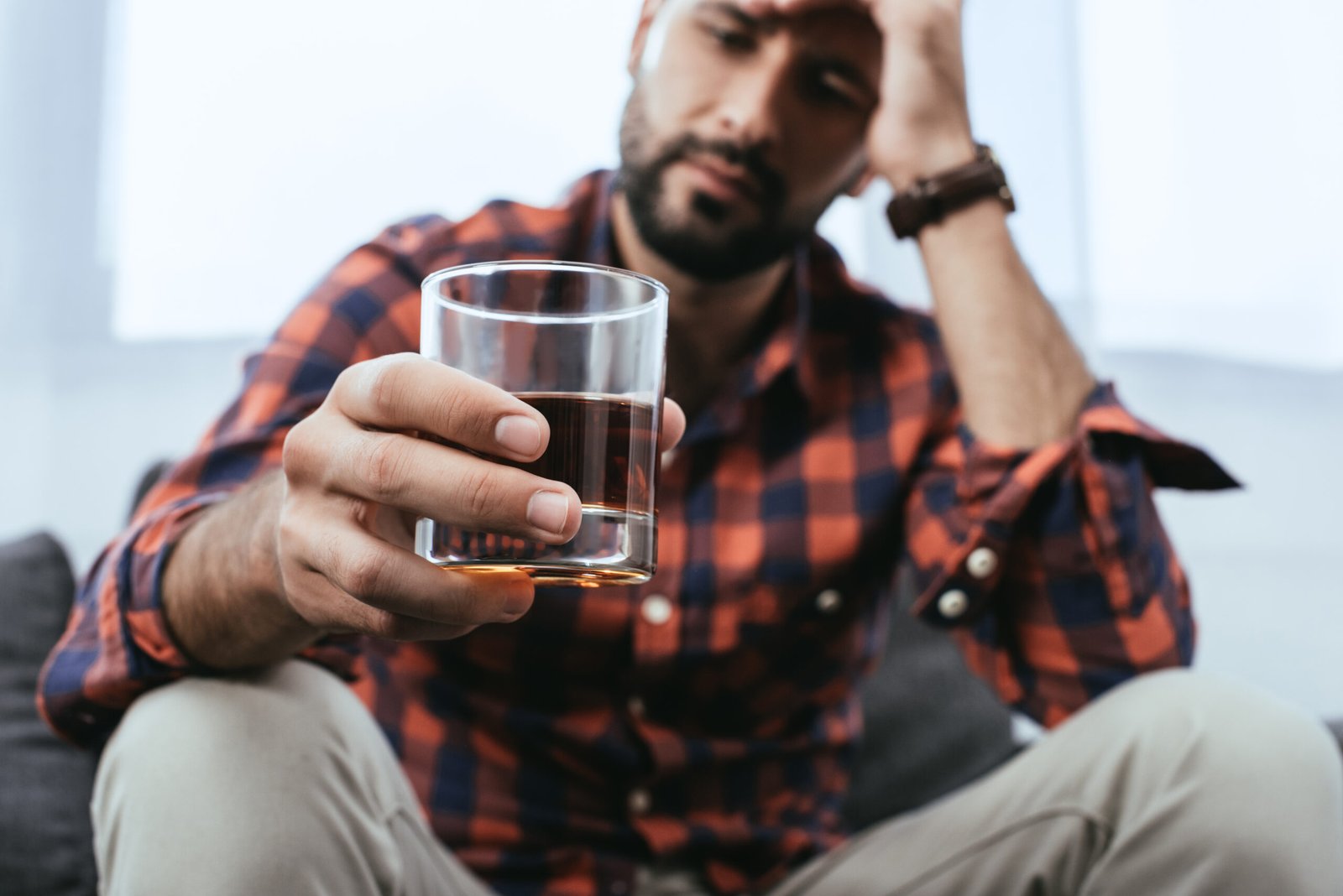Substance Use Disorders Prevention
Myths and Facts About Substance Use

Most American families have been touched in some way by a loved one with problems with drugs or drinking. According to the Substance Abuse and Mental Health Services Administration (SAMHSA) National Survey on Drug Use & Health, 24.6 million Americans aged 12 or older said they had used an illicit drug during the month before the survey.
Unfortunately, many people who have problems with drug use will come across stigma that hinders them from integrating back into society. Police, the legal system, ER staff, and even family members and friends can keep the stigma going, and stigma limits the attention and resources dedicated to solving problems linked to substance use. “Stigma is about discrimination,” says Ivette Torres, Director of Consumer Affairs for SAMHSA’s Center for Substance Abuse Treatment.
While views about people with drug problems and treatments have gotten better, we still have a long way to go toward skillfully addressing these issues. You can help by facing your own attitudes. If you know someone who may have a drug problem, treat him with concern, dignity, and respect. Rather than turning your back or getting angry, offer your support.
Enjoying Happy Hour Without the Alcohol
Summary
- Snack on appetizers.
- Drink non-alcoholic beverages.
- Find alternative places for get-togethers.
“Happy hours” have become one of the most common forms of after-work entertainment among co-workers. In some cases, these occasions provide important opportunities for building and sustaining professional relationships that can become important to our careers. They also provide the opportunity to maintain connections with co-workers we may not otherwise see outside of the office.
So if your choice is not to drink, are you destined to be excluded from these after-work get-togethers? The answer should be a resounding “No!” Drinking alcohol is a personal choice. You have the right to attend social functions without feeling pressured to drink. Admittedly, in the case of happy hours, this may be more difficult, since alcohol is usually the “main event” of the gathering. But it doesn’t have to be. Remember that restaurants and bars use alcohol as a vehicle to entice customers inside, and ultimately the real purpose of gathering with co-workers after a hard day is talking and relaxing outside of the office.
Nevertheless, the desire to “blend in” with your co-workers may be strong. Here are some tips for enjoying happy hour without the alcohol:
- Look at those happy hour advertisements more closely. Chances are the bar or restaurant is also offering appetizers at reduced prices. Snacking on these foods will give you something to do while some of your co-workers drink.
- Many bars and restaurants offer non-alcoholic beverages “on the house” to encourage the use of “designated drivers.” Take advantage of these freebies.
- Surround yourself with other non-drinkers who wish to socialize without the alcohol.
- Above all, do not feel that you have to “apologize” for your decision not to drink. Your choice requires no explanation.
If you wish to avoid traditional happy hour events entirely, suggest after-work gathering places where alcohol is not the main focus. Go to coffeehouses or places where you can relax to local music performances. Suggest after-work activities that involve physical activity, such as fitness classes, jogging or working out at the gym. Start a book club and serve coffee and snacks in your home while enjoying good conversation.
The decision not to drink doesn’t have to make you into a social pariah. You may find that taking the initiative to find alternatives to the traditional happy hour scene will be met with enthusiasm from others who also may be anxious for a change of pace.
By Barbara A. Gabriel
©2000-2021 Carelon Behavioral Health
How to Keep Your Child Away from Drugs
Summary
Parents need to:
- Give a clear and consistent message about drugs.
- Set a good example for the way you want your child to be.
- Keep the child busy in positive activities.
Is it possible to drug-proof your child? Can you prevent him from trying drugs or, worse, developing a substance use disorder?
You can and you can’t. You can set a framework that makes it unlikely he will fall into using drugs, but no matter what you do, there is a certain amount of luck involved in whether or not your child uses them.
Drugs are the last thing a parent thinks of when her child is young. But, it is while they are young that a parent has the best chance to prevent all kinds of problems later on, including drug overuse, says Joseph Lee, MD, Director of Youth Services for the addiction treatment center Hazelden.
Long before their kids are teens, he tells parents to:
- Be consistent in the rules they set and the decisions they make. Kids need parents willing to be leaders, not friends. Be proactive. Do not observe from the sidelines.
- Do not mistake a child’s intelligence for emotional maturity. All children must go through the usual steps of child development. You cannot hurry up the process.
- Make sure your messages are clear. “If your kid can’t tell me how you feel about the possibility of him using drugs, you have a problem,” Lee says.
- Set a clear example for a child to follow. If you want to raise a focused, well-balanced, and sober child, be a focused, well-balanced, and sober adult. You may not notice and he may not admit it, but your child pays close attention to what you say and do.
- Learn as much as you can about good parenting, child development, and health. Kids do not come with instruction manuals, but there are many resources available to parents that can help them do a good job.
- Do not glorify insobriety, even in jokes.
- Keep kids busy in positive activities, like sports, music, or community service.
“Parents need to invest in their family culture and maintain it over time, much as they would invest over the long term in a savings account or a college fund,” says Lee. Only then will the resources be available in a family’s time of need … [so] children will know where to turn for help and parents will know how to respond.”
Even if you follow Lee’s plan, there is always the possibility that your child has inherited the disease of addiction. In fact, about one in nine young people get addicted to substances because they inherited a risk.
What is addiction?
Psychotherapist Tina Tessina says someone is addicted if he is willing to ruin his life to satisfy a need. It does not matter if the addiction is to sex, alcohol, drugs, or overwork.
“It’s not cut-and-dried,” she says. “There is no medical test. The important thing is, if a person is jeopardizing his health, job, or family to smoke grass, that person needs to get help and get it fast.”
Addiction is a brain disease, and like other diseases, it calls for medical help. And, it runs in families.
Teens and addiction
Most teens that use drugs start with marijuana. It is cheap and easy to get. It also has become socially acceptable. Pot is depicted on TV and film as a fun and normal thing for a teenager to try or use.
Lee points out that those in the media who “celebrate” the use of pot fail to mention how many young people it has robbed of motivation, memory, and the ability to learn.
Age, amount, and frequency of use raise the risk of addiction. About one in nine, or a little less than 10 percent of those who start using marijuana as an adult—even occasionally—become dependent on it. For those who start using pot in their teens, that percentage goes up to 15. For teens that use daily, the risk of addiction grows to 35 percent to 50 percent.
That rate goes up because a young brain is still as much as a decade away from maturity. It is easily altered by substances in drugs—such as THC—that affect memory, learning, and self-control. Those changes can be temporary or permanent. They certainly last as long as the person smokes pot, which explains why kids called “stoners” flunk out of school and adult users have trouble holding down jobs.
Long-term marijuana use promotes other serious health risks, including lung disease. It also causes many serious accidents on the road and at work.
Young people who develop an addiction generally have a problem with all kinds of substances, including alcohol and cigarettes. They need professional help to get over an addiction, not simply a smoking cessation program.
Psychotherapist William Shryer worries about young people falling into addiction because they do not know they are at risk. Kids need to know, he says, if their family has a history of depression, psychosis, alcohol use disorder, or dependency on prescription drugs. If so, the kids should not even try marijuana. Addictive substances can easily stimulate the gene leading to dependence.
Shryer tells young teens, “If you don’t know your family medical history, ask your parents.” Just as they would for diabetes, parents need to warn children if they know they may be at risk for addiction.
Risk factor or not, long-term use of marijuana may lead to serious mental illness later in life, say researchers at the National Institute on Drug Abuse. Marijuana worsens the course of illness in people with schizophrenia, and can produce a brief psychotic reaction in an otherwise healthy person. That reaction fades as the drug wears off.
It will be up to parents to expose the truths and untruths touted in media about how safe and beneficial pot is. Like alcohol, safety depends on the age of the user, the amount, and length of time used.
Is marijuana a gateway drug?
Most psychologists agree that marijuana is not a gateway drug in the sense that something in it pushes a person to use stronger drugs. Plenty of people use pot and no other drugs.
“It’s not peer pressure, but peer association that leads to use,” Lee says.
Jenny Karstad, a clinical supervisor of treatment programs for addiction, agrees: “The danger is that, if you are around people using pot, they probably have other drugs, too.” The substance itself won’t make them crave heroin but the people they hang out with and those who sell them the drug will.
I used it myself when I was young. How can I keep my child from trying it?
This is tricky. David Sheff, who wrote several books about his son’s drug addiction, wishes he had not told his son he used marijuana when he was young. He thought his war stories would open lines of communication with his teen. That backfired. Dr. Lee warns parents to use whatever they want to tell about their own use, as a vehicle to remind their child to stay away from drugs.
How will I know if my kid uses marijuana?
You may notice:
- A change in attitude—your child may withdraw from the family or lose interest in things he once loved
- Grades or interest in achievement drop
- A change in friends—suddenly, he is hanging out with the “stoner” crowd
“Parents need to keep in touch with their children, draw them into conversation, keep them and their friends around the house, and keep tabs on what they’re doing,” says Tina Tessina.
Any drug use signals a problem in a child’s life. Often, kids turn to drugs when something is not right. Maybe they were abused at the hands of an adult or bully, or have attention-deficit/hyperactivity disorder. Many kids who have depression or anxiety turn to pot for relief.
Tessina reminds parents that, even if marijuana use is legal in your state, it probably is illegal for minors to use it.
Legal or not, if marijuana has changed the direction of your child’s life, get him help. Get advice from your family doctor, a drug counselor, or child psychologist. You may also want to look into support from a group such as Marijuana Anonymous.
By Paula Hartman Cohen
©2013-2019 Carelon Behavioral Health
Source: Jenny Karstad, MA, LADC, LCMHC, clinical supervisor, Brattleboro Retreat Mental Health and Addiction Treatment Center, Brattleboro, VT; Joseph Lee, MD, psychiatrist, medical director for youth services and national advocate for adolescent addiction and mental health issues, Hazelden Addiction Treatment Centers, Minneapolis, MN; William Shryer, DCSW, LCSW, clinical director, Diablo Behavioral Healthcare Centers, Danville, CA; Tina B. Tessina, PhD, psychotherapist and author of The Real 13th Step: Discovering Confidence, Self-Reliance, and Independence Beyond the 12-Step Programs, Long Beach, CA
Myths and Facts About Substance Use
Summary
Before forming an opinion about someone with substance use problems, consider these common myths.
“Those who overuse substances have a moral flaw.”
“People with alcohol and substance use disorders don’t want to quit—if they did, they would just stop using.”
“Locking up all the people who overuse substances will solve the problem.”
These and many other myths about drug use add to the problem. The stigma tied to drug use discourages treatment for addiction and limits chances for work, housing, and social relationships. Although drug use has a deep, harmful impact on society, it is not an insurmountable problem. Become part of the answer by helping to stop stigma.
Identifying the problem
Most American families have been touched in some way by a loved one with problems with drugs or drinking. According to the Substance Abuse and Mental Health Services Administration (SAMHSA) National Survey on Drug Use & Health, 24.6 million Americans aged 12 or older said they had used an illicit drug during the month before the survey.
Unfortunately, many people who have problems with drug use will come across stigma that hinders them from integrating back into society. Police, the legal system, ER staff, and even family members and friends can keep the stigma going, and stigma limits the attention and resources dedicated to solving problems linked to substance use. “Stigma is about discrimination,” says Ivette Torres, Director of Consumer Affairs for SAMHSA’s Center for Substance Abuse Treatment.
Separating myth from fact
Stigma comes from the myths about drug use. Before forming an opinion about someone with substance use problems, think over these common myths:
Myth: Those who overuse substances have a moral flaw—they could will themselves to stop using if they wanted to quit.
Fact: One common and false stereotype about people with substance use disorders is that they are all social misfits and outcasts. “Stigma can also get at the idea that the person is weak of character or untrustworthy,” explains Jim Beek, a SAMHSA information officer. In reality, “normal” people deal with drug use issues, which can touch whole families. Drug and alcohol dependence meet the standards for treatable, chronic health issues; dependence is not simply a matter of choice. “One of the biggest and most pervasive myths is that … a user can stop using alcohol or drugs by willing themselves to,” agrees Torres. “Society at large has to accept addiction treatment and begin to look at it as a public health issue.”
Myth: Addiction is not reversible: Once an addicted to a substance, it is always that way.
Fact: Many people don’t realize how helpful programs and services can be in treating substance use disorder. In fact, drug addiction treatment works as well as established medical treatments for other illnesses such as diabetes and asthma, the Physician Leadership on National Drug Policy has reported. Another study found that for each dollar invested in treatment, taxpayers saved $7 in future costs, according to the National Institute on Drug Abuse.
Unfortunately, the shame tied to being labeled or viewed negatively by others can keep people from seeking care. “Stigma is a factor,” Torres notes. “That’s why you see so many individuals speaking out, saying, ‘Recovery is possible. I am an example of that.’’’ And luckily, new choices, such as the prescription addiction treatment drug buprenorphine, can help stop the stigma linked to lining up outside a clinic.
Myth: Harsher criminal penalties for using drugs or increasing efforts to cut off the drug supply will solve the problem.
Fact: This common wisdom is at odds with research showing the effectiveness of treatment. And, keep in mind that there is no “silver bullet” when it comes to solving drug use problems. While a blend of things such as treatment, parental influence, and education programs can help, taken alone, “get tough” approaches don’t address the underlying social and family issues linked to drug use.
You can help
While views about people with drug problems and treatments have gotten better, we still have a long way to go toward skillfully addressing these issues. You can help by facing your own attitudes. If you know someone who may have a drug problem, treat him with concern, dignity, and respect. Rather than turning your back or getting angry, offer your support.
Resources
National Institute on Drug Abuse
www.drugabuse.gov
Physician Leadership on National Drug Policy
www.plndp.org
Substance Abuse and Mental Health Services Administration
www.samhsa.gov/
By Kristen Knight
©2022 Carelon Behavioral Health
Resources
Al-Anon Family Groups
Alcoholics Anonymous World Services, Inc. (AA)
Main site: www.aa.org
Online support groups: www.aa-intergroup.org







